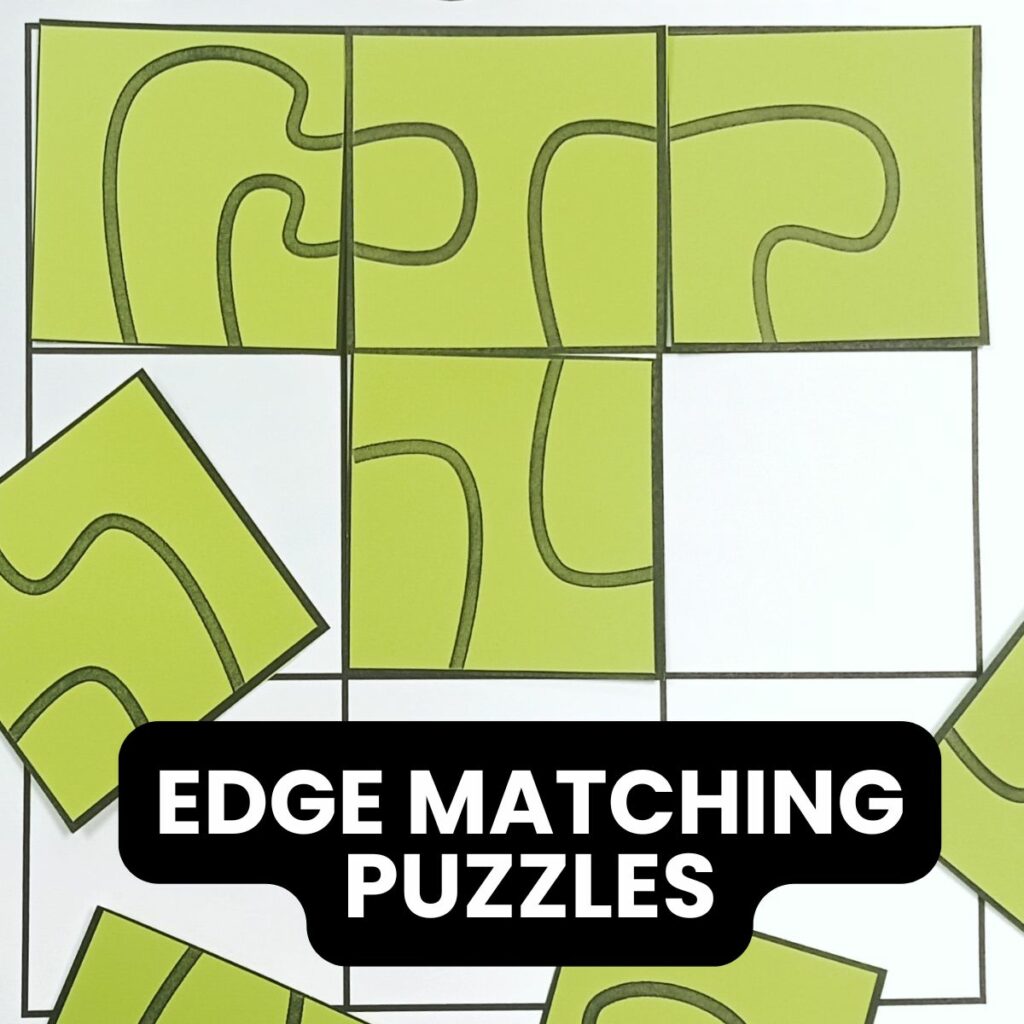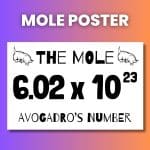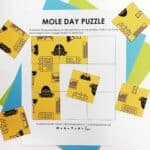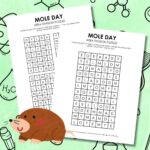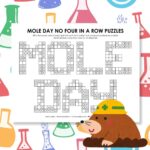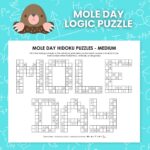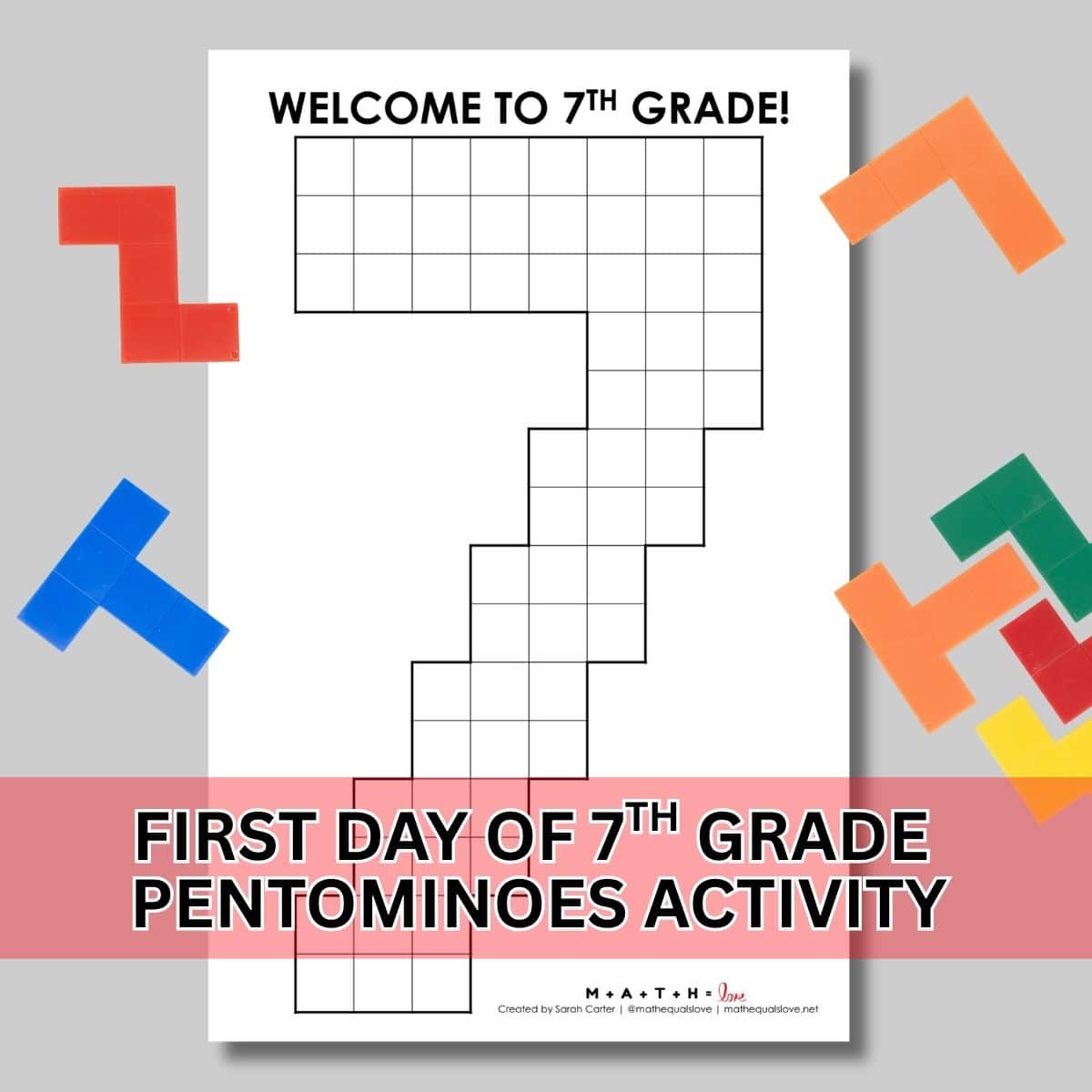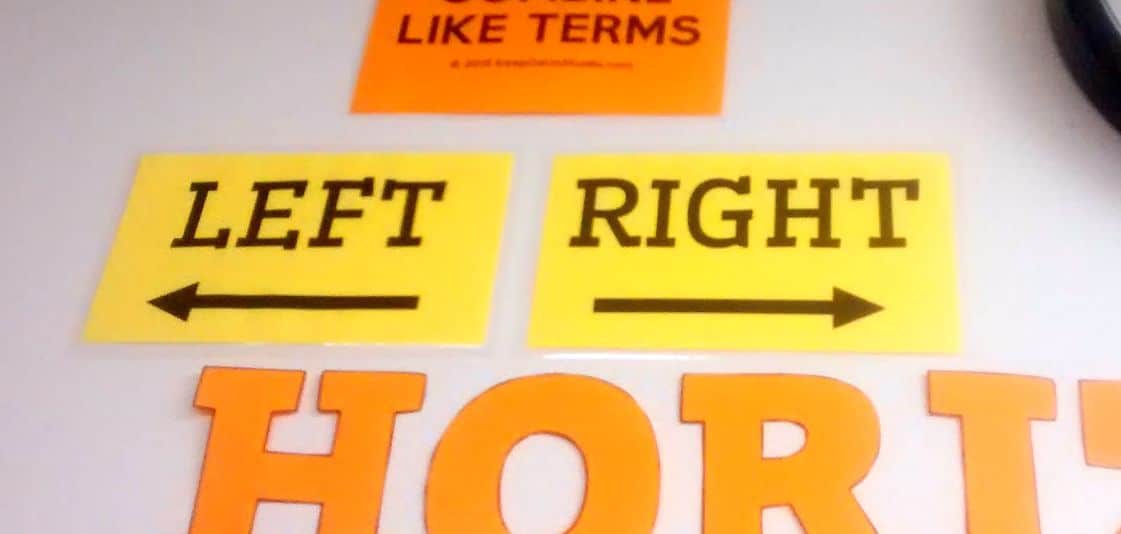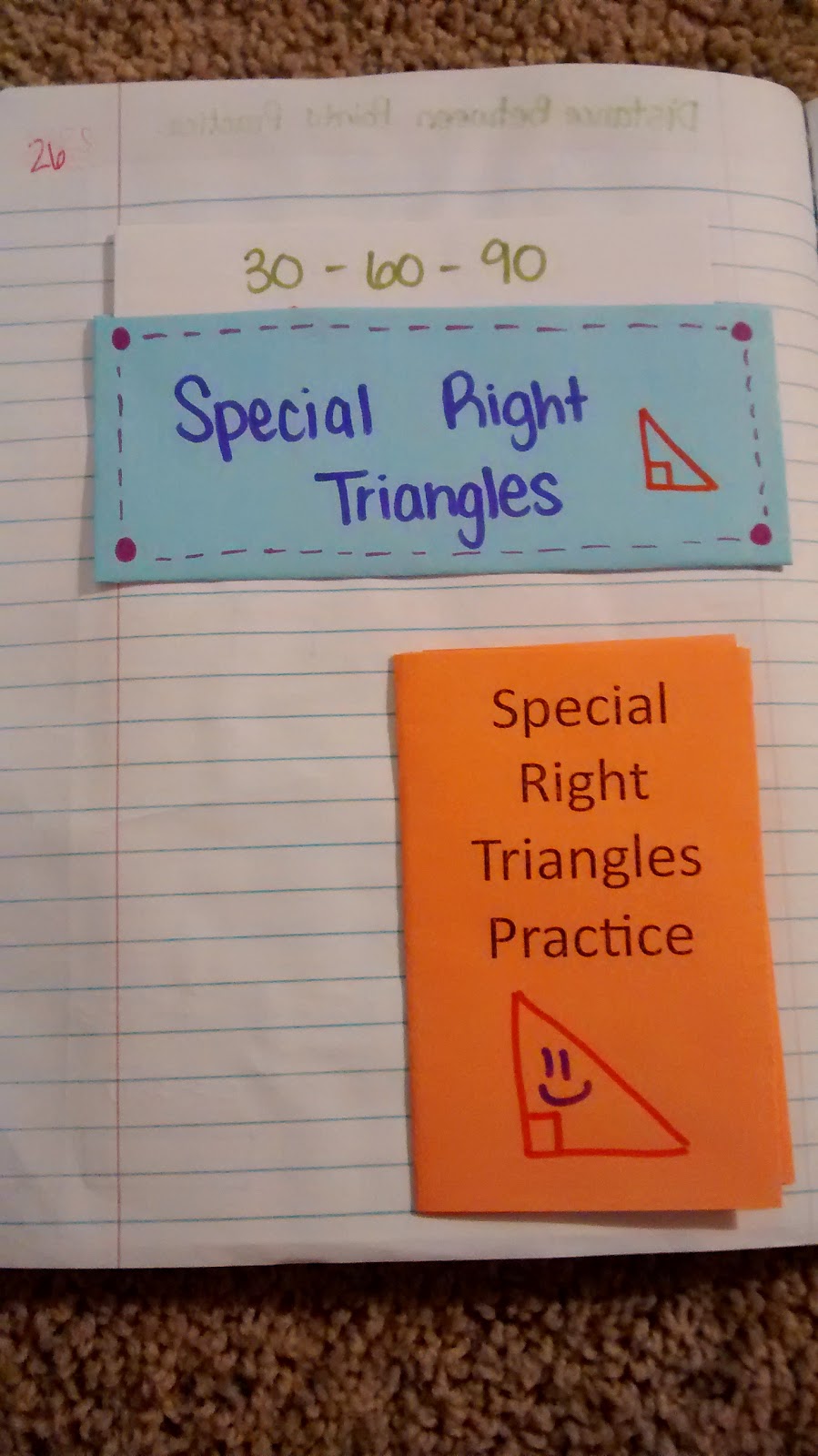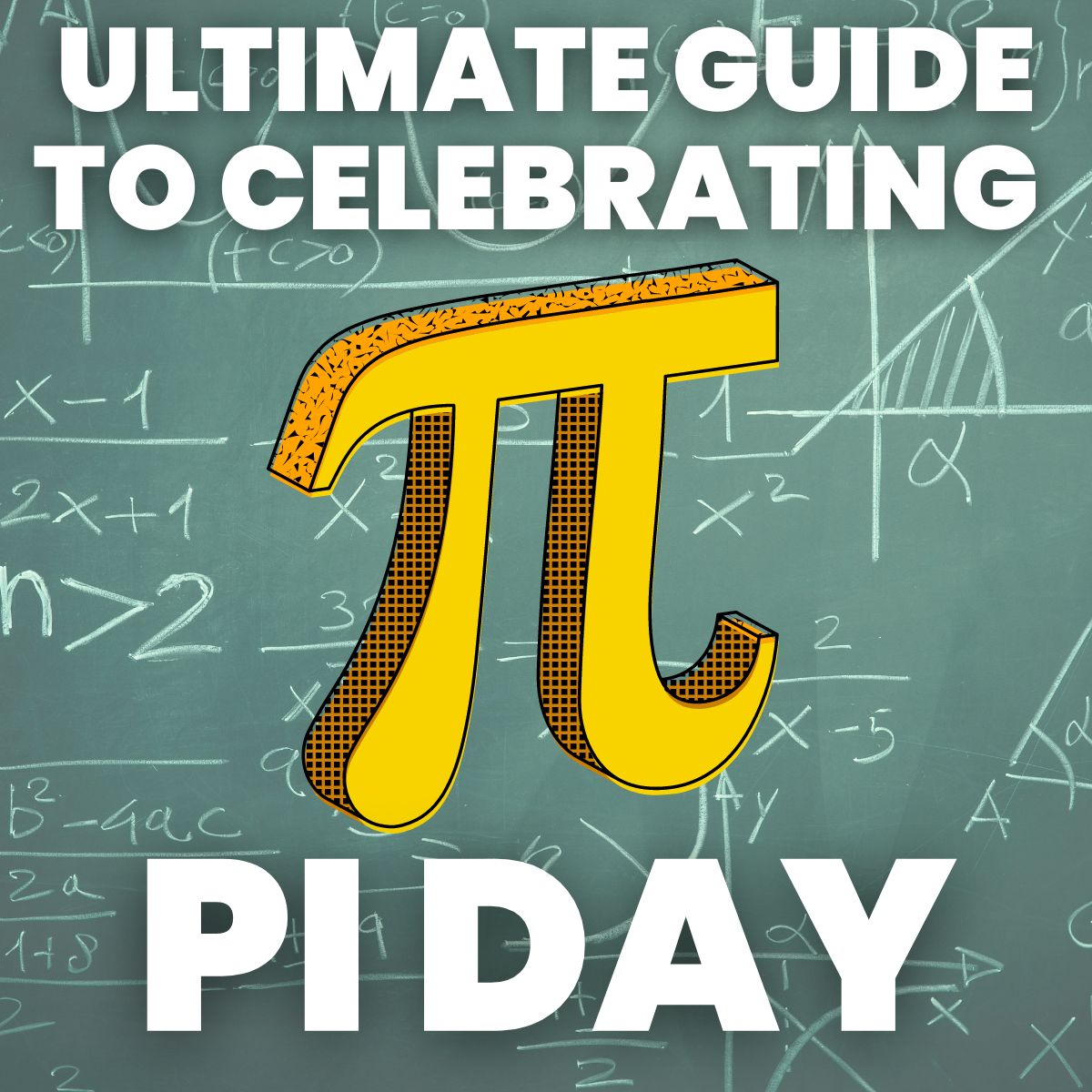Mole Day Square Logic Puzzle
This blog post contains Amazon affiliate links. As an Amazon Associate, I earn a small commission from qualifying purchases.
Add this fun Mole Day Square Logic Puzzle to your Mole Day festivities on October 23rd! Will your students be able to assemble the pieces to form a 3×3 square where the pieces match along each edge?

This puzzle is just one of many printable edge-matching puzzles that I have created for my own classroom and am sharing with you!
Be sure to check out my entire collection of free hands-on puzzles.
This specific puzzle is definitely more science focused than math focused. But I know there are quite a few teachers out there that teach both subjects!
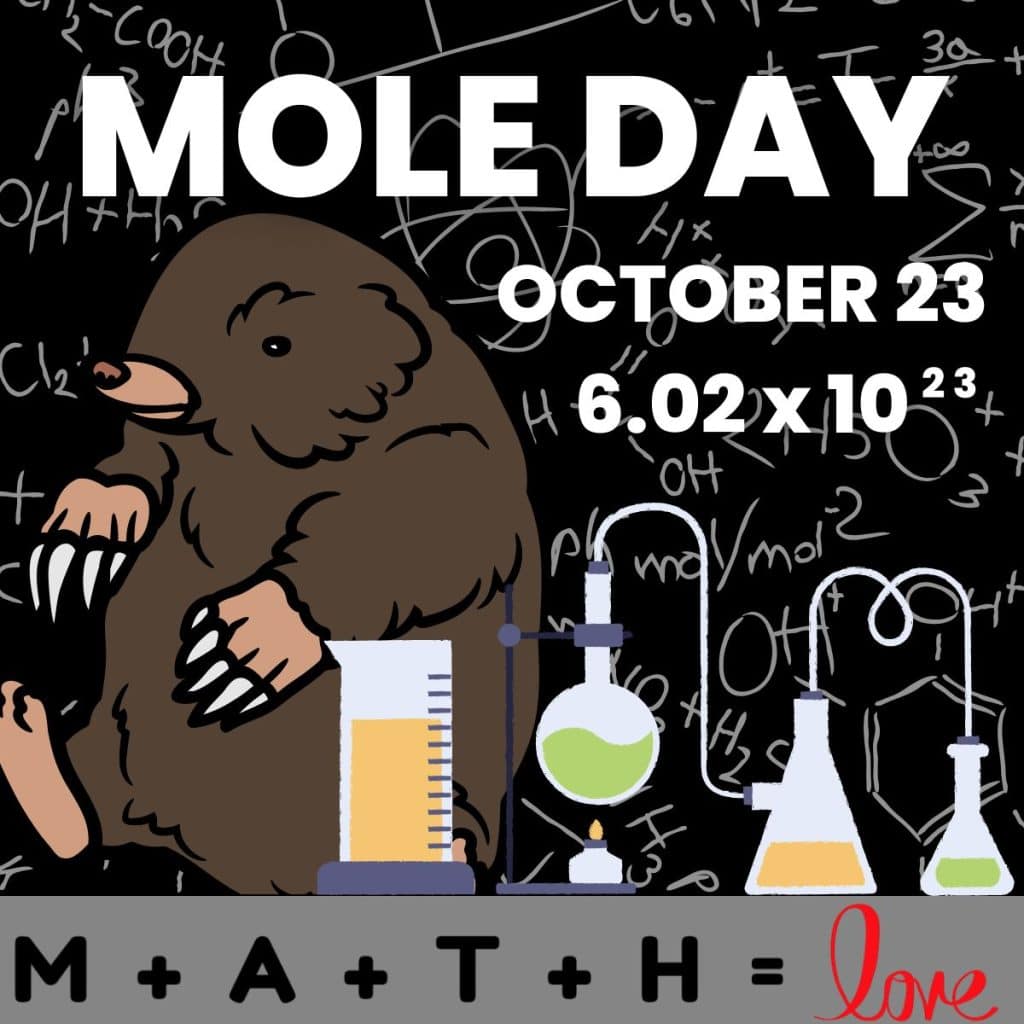
Looking for more Mole Day activities and puzzles for your science classroom? Here’s a few examples of the other Mole Day resources for October 23rd I have created.
Puzzle Instructions
Cut apart the provided pieces and assemble them into a 3×3 square so that the puzzle pieces match along each edge to form images related to Mole Day.
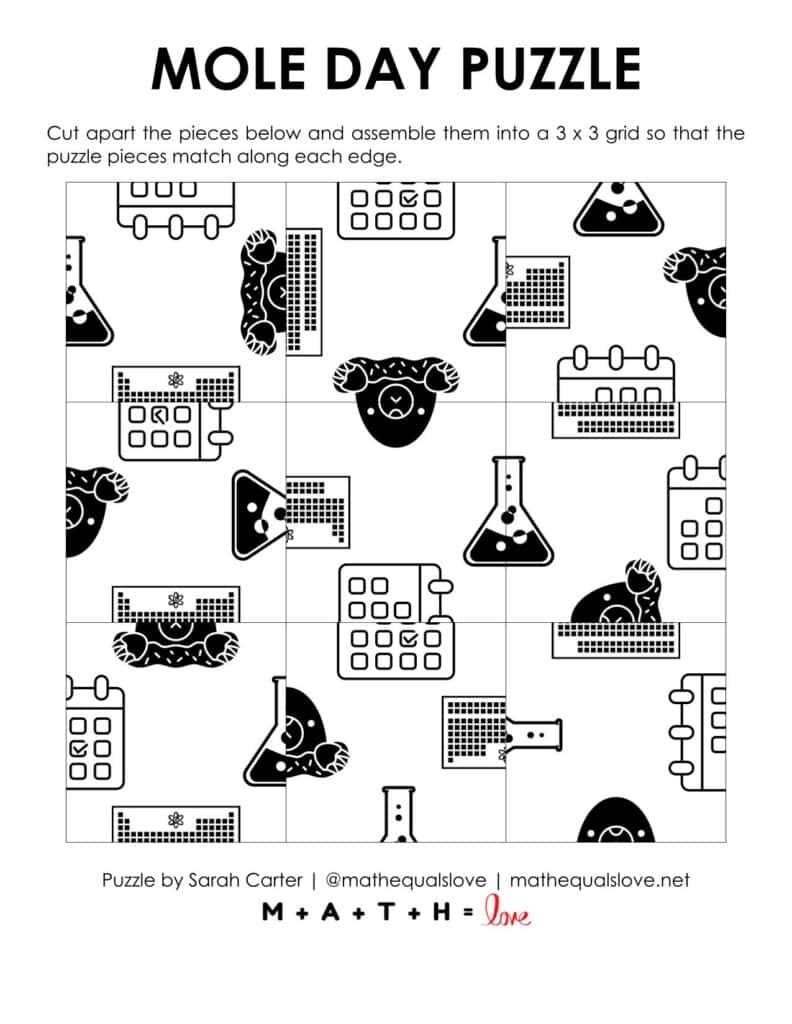
What is Mole Day?
Not sure what mole day is? It’s pretty much the chemistry teacher equivalent of Pi Day. In chemistry, a mole of any substance is equal to 6.02 X 10^23 particles of that substance. So October 23rd has become known as mole day to celebrate this special number known as Avogadro’s number.
Check out this blog post full of other Mole Day Decorations and Activities.
Many of my calculus and precalculus students are also studying chemistry, so I decided to create this special mole day square puzzle in the works for them to tackle that week.
You could also use mole day as a day to explore the fun world of scientific notation with students!
Fun Fact: I am actually certified to teach both math and chemistry!
Options for Printing and Prepping the Puzzle
There are several options for printing and prepping this edge-matching puzzle.
The easiest way to distribute this puzzle to students is to print the page with the puzzle pieces, have each student cut out their own pieces, and let them build their square grid on their desks.
If you plan on reusing the puzzle pieces from year to year, I highly suggest running the pages through a laminator first to make the pieces more durable.
MATH = LOVE RECOMMENDS…
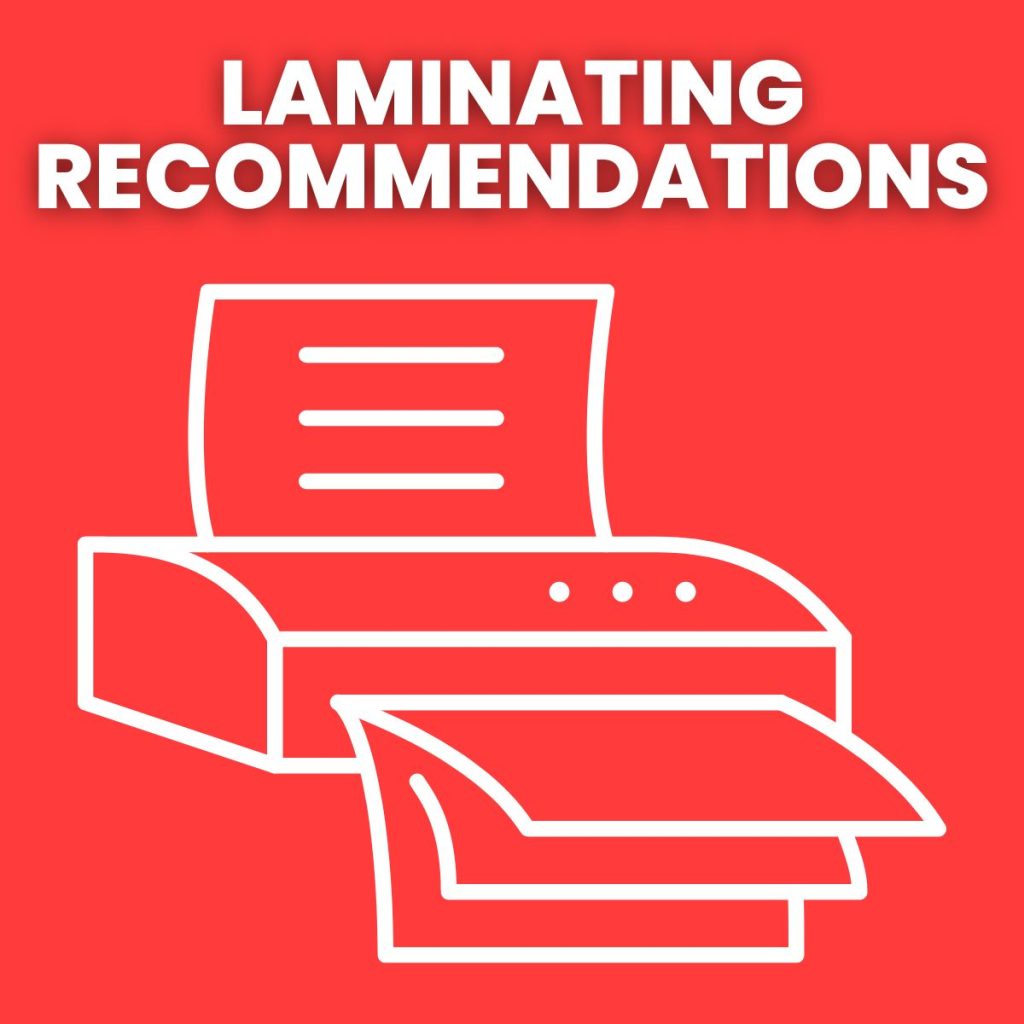
A laminator is a MUST-HAVE for me as a math teacher! I spent my first six years as a teacher at a school with a broken laminator, so I had to find a way to laminate things myself.
I’ve had several laminators over the years. I currently use a Scotch laminator at home and a Swingline laminator at school.
I highly recommend splurging a bit on the actual laminator and buying the cheapest laminating pouches you can find!
If you are giving each student their own copy of the puzzle, this is entirely unnecessary. Just print on some pretty, colorful paper and GO!
If you are looking to display the resulting work or if you would like students to keep their work in a folder or notebook, you might want to print the next page in the PDF file which includes a 3 x 3 puzzle grid for students to build their solution upon or glue their pieces on after solving.

In my opinion, this page is most useful for those who are opting to display or keep the resulting solved puzzle. If you are reusing the puzzle pieces with different classes, I would just put the puzzle pieces in bags and forego the printable template.
If you are working with younger students or with a population of students who needs a bit of starting place for their puzzle solving, there is another version of the grid in the file that shows which puzzle piece belongs in the top left corner of the square.
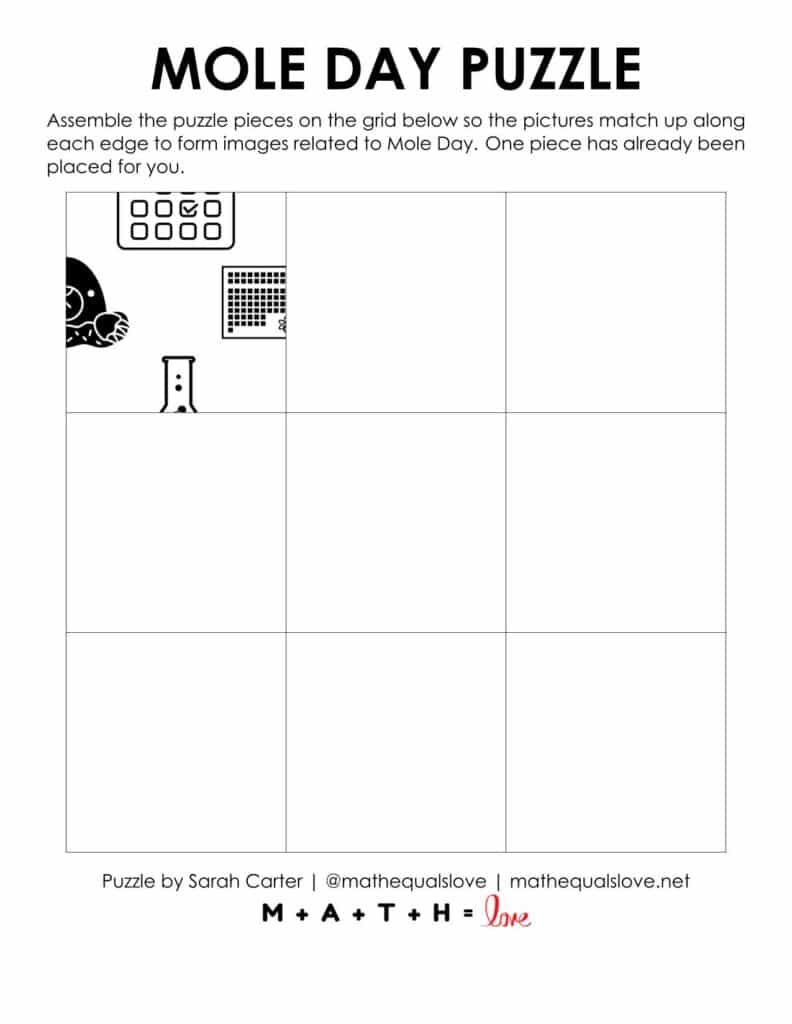
Including this piece of information will drastically reduce the amount of time it takes older students to solve the puzzle, so I would be very discerning about whether your students need this scaffolding or not.
Ultimately, you know best what your students need. When I first started sharing puzzles I created for my classroom 8 years ago, I never imagined that they would be used in so many diverse classrooms around the world.
How I Use this Puzzle in the Classroom
I am using this puzzle as one of my puzzles of the week which I hang on my dry erase board for students to work on before class or as an early finisher activity.

I printed copies of the puzzle and hung it in a magnetic pocket on my dry erase board at the front of my classroom. This way, students can grab a copy of the puzzle and take it back to their desk to work on it.
There are also jumbo-sized puzzle pieces available to print at the end of the PDF file. These can be printed so students can work on the puzzle in small groups.
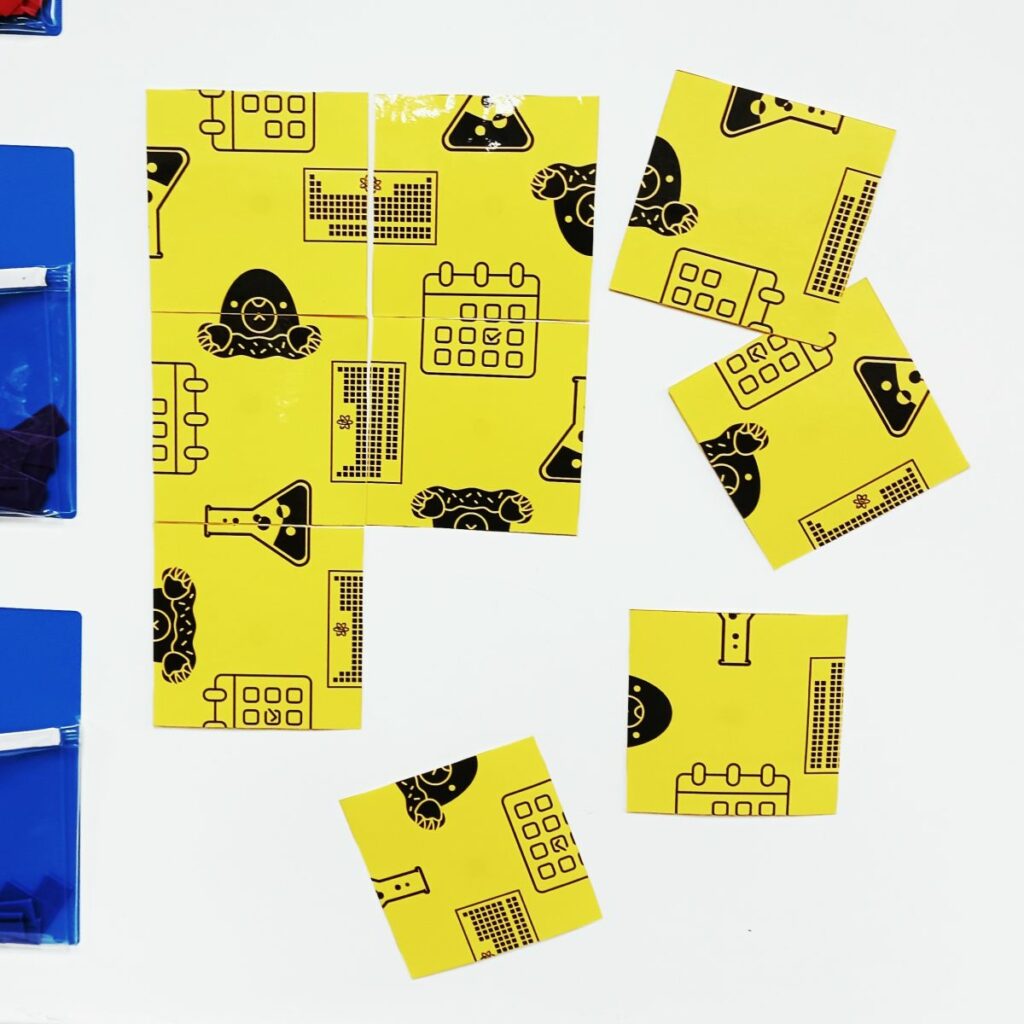
Alternatively, disc magnets can be applied to the pieces so they can be hung on a magnetic whiteboard or other magnetic surface.
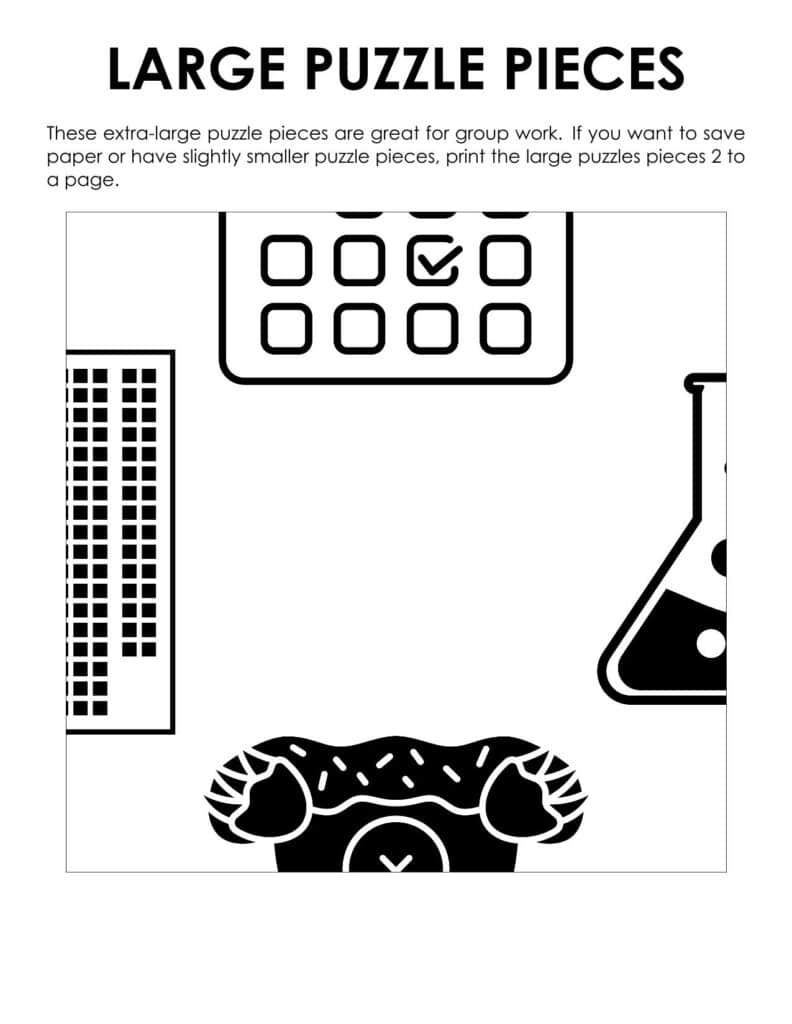
I actually put up both the small individual version of the puzzle and the large magnetic version on my dry erase board at the same time. The large magnetic puzzle pieces are a great way to catch student interest and make them notice the weekly puzzle.
Mole Day Square Logic Puzzle Files
This Mole Day Square Logic Puzzle is available as a PDF file. As a result of the program I used to make the puzzle, there is no editable version. Sorry for any inconvenience.
Click here to SAVE the file to your device.
Mole Day Square Puzzle (PDF)
915 saves – 192.75 KB
Puzzle Solutions
Puzzle solutions are available on a password-protected solution page. I do not openly post the puzzle answer keys because one of my goals as a resource creator is to craft learning experiences for students that are non-google-able. I want teachers to be able to use these puzzles in their classrooms without the solutions being found easily on the Internet.
Please email me at sarah@mathequalslove.net for the password to the answer key database featuring all of my printable puzzles and math worksheets. I frequently have students emailing me for the answer key, so please specify in your email what school you teach at and what subjects you teach. If you do not provide these details, I will not be able to send you the password.
Not a teacher? Go ahead and send me an email as well. Just let me know what you are using the puzzles for. I am continually in awe of how many people are using these puzzles with scouting groups, with senior adults battling dementia, or as fun activities in their workplace. Just give me enough details so I know you are not a student looking for answers to the puzzle that was assigned as their homework!

